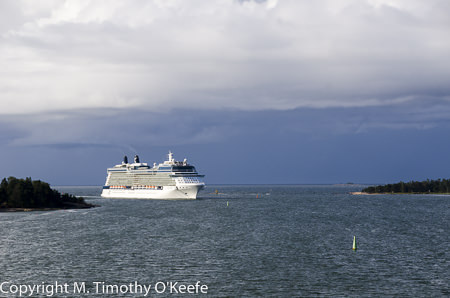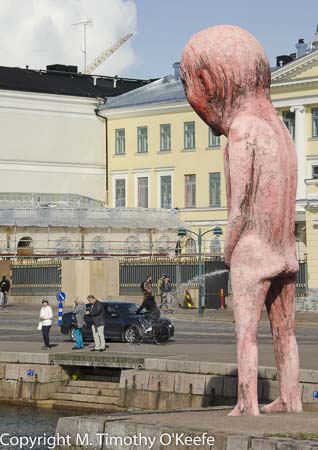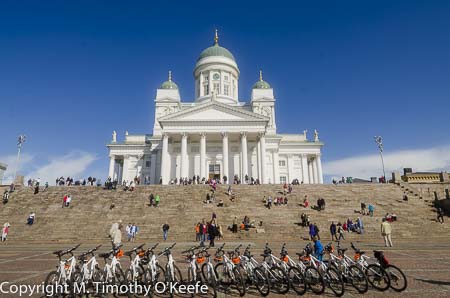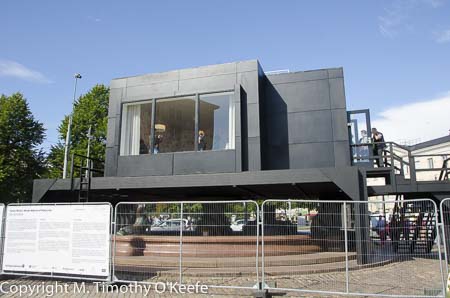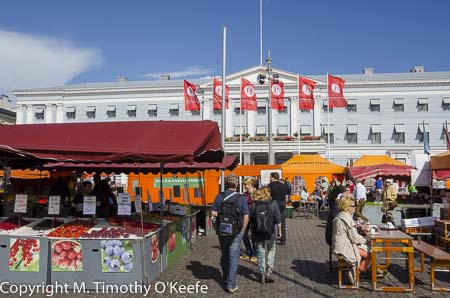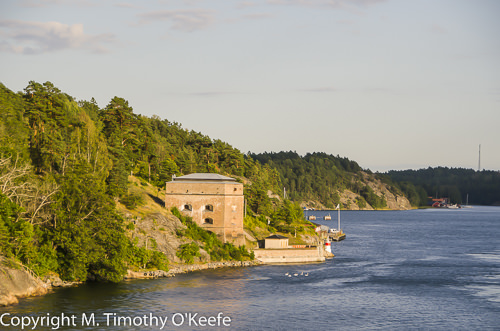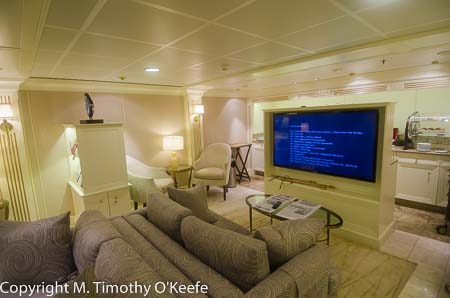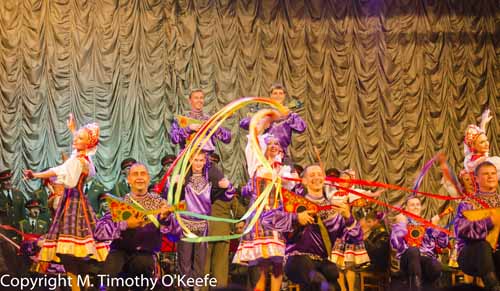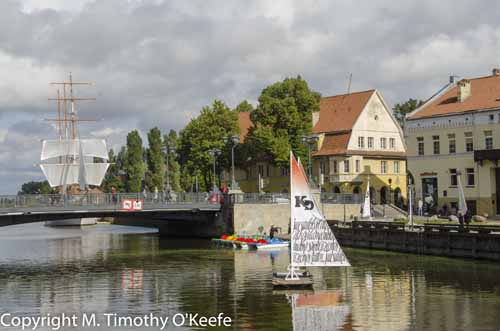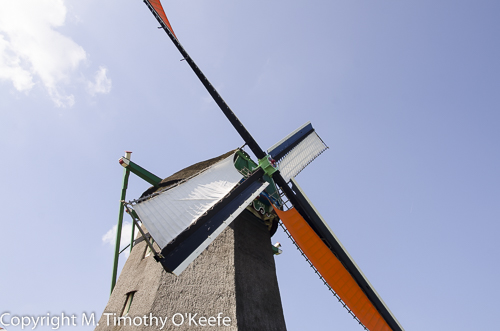Exploring St. Petersburg, Russia
Probably the main reason we book the Viking Trails cruise is the Oceania Marina three-day visit in St. Petersburg, Russia, and the free tours offered for this port. Linda and I each schedule six Oceania St. Petersburg excursions two months before departure. Normally, the tour packages would cost close to $1,000 for each of us.
Aboard the Marina, we meet frequent Oceania passengers who ignore the ship’s no charge tours in favor of using a local tour agencies like SPB which caters to smaller groups. Among those touring independently are the new friends we made the first day over lunch. Understandably they do not want to be herded around with 40 other Oceania passengers as on previous cruise tours. That may have been a problem elsewhere but in St. Petersburg, our large bus tours aren’t a problem.
On my two prior visits to St. Petersburg, I enjoyed having complete freedom to explore the city on my own at any time of day or night. That’s not an option now due to Russia’s high visa fees for independent U.S. travelers. At the moment a personal visa costs between $200 and $300 a person. Cruise ship passengers, however, do not need visas for stays up to 72 hours as long as they join government-authorized tour operators when they go ashore.
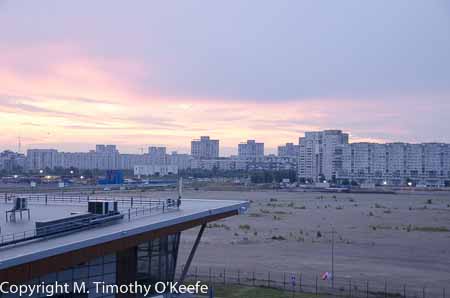 Marine Facade Terminal, St. Petersburg
Marine Facade Terminal, St. Petersburg
We arrive in St. Petersburg early enough for a 9 a.m. tour departure. We dock at the mouth of the Neva River beside a cruise terminal with the odd name of Marine Façade. Well, the terminal building is a façade of sorts, filled with lots of empty space that easily could be made to accommodate much greater numbers of passengers. Outside, in front of the cruise terminal, is a huge expanse of barren ground temporarily occupied by a flock of sea gulls. No doubt lots of development is planned for this land, too.
Immigration & Russian Politics
As in the Cold War days, Russia remains security conscious. In St Petersburg, we must not only carry passports ashore but pass through immigration in the terminal each time we leave and reboard the Marina. Returning to Marine Façade, the cheerful morning atmosphere disappears, replaced by a cold official reception. The immigration officers are all business. They never smile, never offer a hint of friendliness. These passport stampers act annoyed at our presence.
Perhaps they are, considering the disdain Russian President Vladimir Putin has for President Obama. St. Petersburg is very Putin friendly. This is his hometown, where he was born, where he graduated from law school and, according to one Russian guide, where he routinely allocates generous projects to benefit his city. Moscow may be the capital but Putin also has an official residence here at Konstantinovsky Palace, also called Putin’s Palace, which is open to visitors.
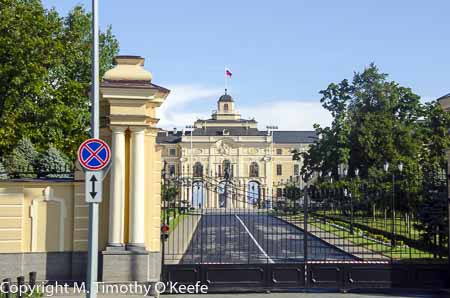 Russian presidential residence, a.k.a. Putin’s Palace
Russian presidential residence, a.k.a. Putin’s Palace
The Russian immigration staff may appear permanently grouchy but the average Russian in my experience is almost always friendly towards American tourists. As one Muscovite told me during the Cold War after we sled raced down a steep snow-covered hill well outside Moscow, “We are all the same. It’s the leaders who create the differences.”
Some of the ship passengers are troubled by their immigration experience. They voice their concern to our guide. She attempts to defuse the cold St. Petersburg greeting by reassuring everyone.“In St. Petersburg there is a saying that only fools smile for no reason.” She explains the absence of smiles also reflects the St. Petersburg temperament due to the freezing Russian winter here which brings 19 hours of darkness during the day. Her explanation seems to mollify those upset, even though I think she’s just advised them to stop behaving like smiling fools.
This morning we visit my old nemesis, the famous parks and palace of Peterhof built by Tsar Peter I (Peter the Great). Located about 20 miles from St. Petersburg, Peterhof means “Peter’s Court” in Dutch. Peterhof was changed to Petrodvorets (“Peter’s Palace”) in 1944 apparently because Peterhof sounded too German. The Peterhof title returned in 1997 after the Soviet era, although the area around Peterhof is still known as Petrodvorets.
Peterhof’s assembly of palaces and gleaming golden statues, one of Russia’s most recognized landmarks, sustained heavy damage during World War II. By 1947, the grounds and structures were largely repaired and for the 300th anniversary celebration of St. Petersburg in 2003, everything was restored fully. Which means the gardens and statuary will be more impressive than my last visit, and I was thoroughly impressed then.
My Peterhof Curse
Peterhof, built at the beginning of the 1700s, is most famous for its spectacular series of spewing fountains spread over several acres. No pumps of any type ever powered the fountains. Instead, large reservoirs built at palace level above the statues provide the immense water pressure to power the fountains and the famous statues depicting ancient gods, goddesses, horses and fish. Peterhof’s most important formation is The Grand Cascade, a series of terraces, fountains and statues that stretch downhill from the Grand Palace to the Marine Canal.
Despite two previous visits, I have not a single picture of the palace or the fountains or the statues. Oh, I definitely tried to take photos each time I visited, several years apart. I even used different pairs of Nikon SLR film cameras on each trip; I always carry two cameras in case one fails. A lot of good that did. On both visits, cameras that worked perfectly before and immediately after my Peterhof visit inexplicably stopped working while at Peterhof itself.
The cameras simply would not function there. Naturally I changed camera batteries, did everything I knew how to do to make those damn cameras take a picture. My equipment seemed cursed. Or perhaps it was me. No one with me experienced any camera malfunctions.
I never suffered such complete camera paralysis anywhere else, at home or while photographing on all seven continents. Another similar camera disaster can’t possibly happen again today. I’ve come loaded for Russian bear, carrying three cameras this time. It’s inconceivable every one of them mysteriously will break down again.
Also, the weather is perfect this morning. I take that as a good omen. This time, no camera or anything else possibly can ruin my Peterhof visit Third time is the charm. Has to be.

 Follow
Follow